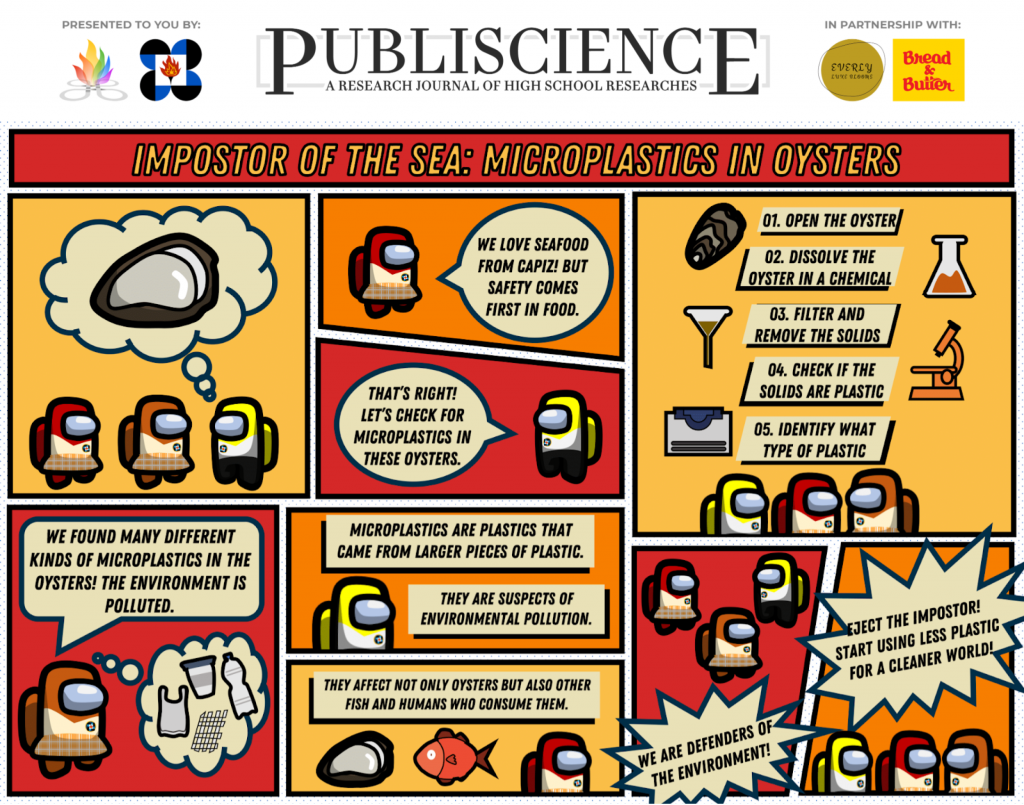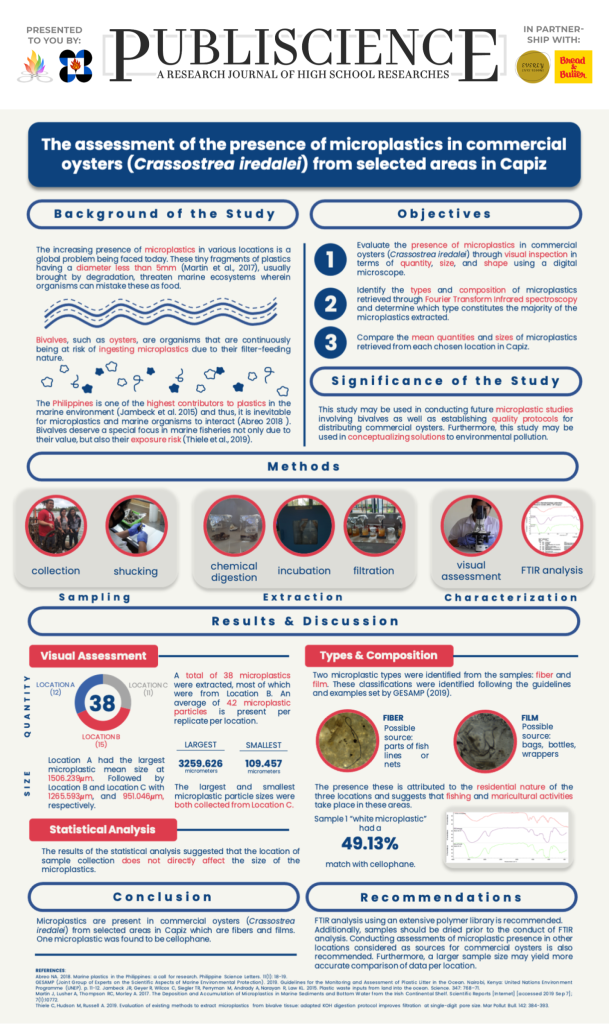Microplastics in farmed oysters (Crassostrea iredalei) from Capiz, Philippines
ARABELLA SHAYNE S. BRAÑA, MARIAMA LOIS P. CELESTIAL, RYNE JETHRO M. MOLINA, and CATHERINE JOY A. MEDIODIA
Philippine Science High School Western Visayas Campus – Department of Science and Technology (DOST-PSHSWVC), Brgy. Bito-on, Jaro, Iloilo City 5000, Philippines
Abstract
Microplastics (plastic particles <5 mm in size) have been increasingly abundant, especially in filter-feeders. Oysters are commercially farmed and highly consumed in the Philippines. This study determined the presence of microplastics in commercial oysters (Crassostrea iredalei) sold in public markets from Cagay, Culajao, and Ivisan, Capiz. Thirty oysters yielded 47.6 g of meat, which were homogenized, divided into nine portions for KOH digestion, and incubated at 40 °C for 48 h. The digestates were passed through 25 μm Whatman filter paper. The retained particles were viewed under a microscope, identified by GESAMP descriptors, photographed, counted, and measured. Three residues were analyzed by FTIR spectroscopy to identify the chemical origin of the microplastics. The study confirmed the presence of microplastics in the oysters. The 38 microplastic particles were mostly fibers with some sheets. Their sizes ranged from 109 μm to 3.3 mm, and did not significantly differ among the three source locations. Only the sheet particle had a 49% match with cellophane.
Keywords: microplastic, oyster, Crassostrea iredalei, FTIR, KOH digestion


